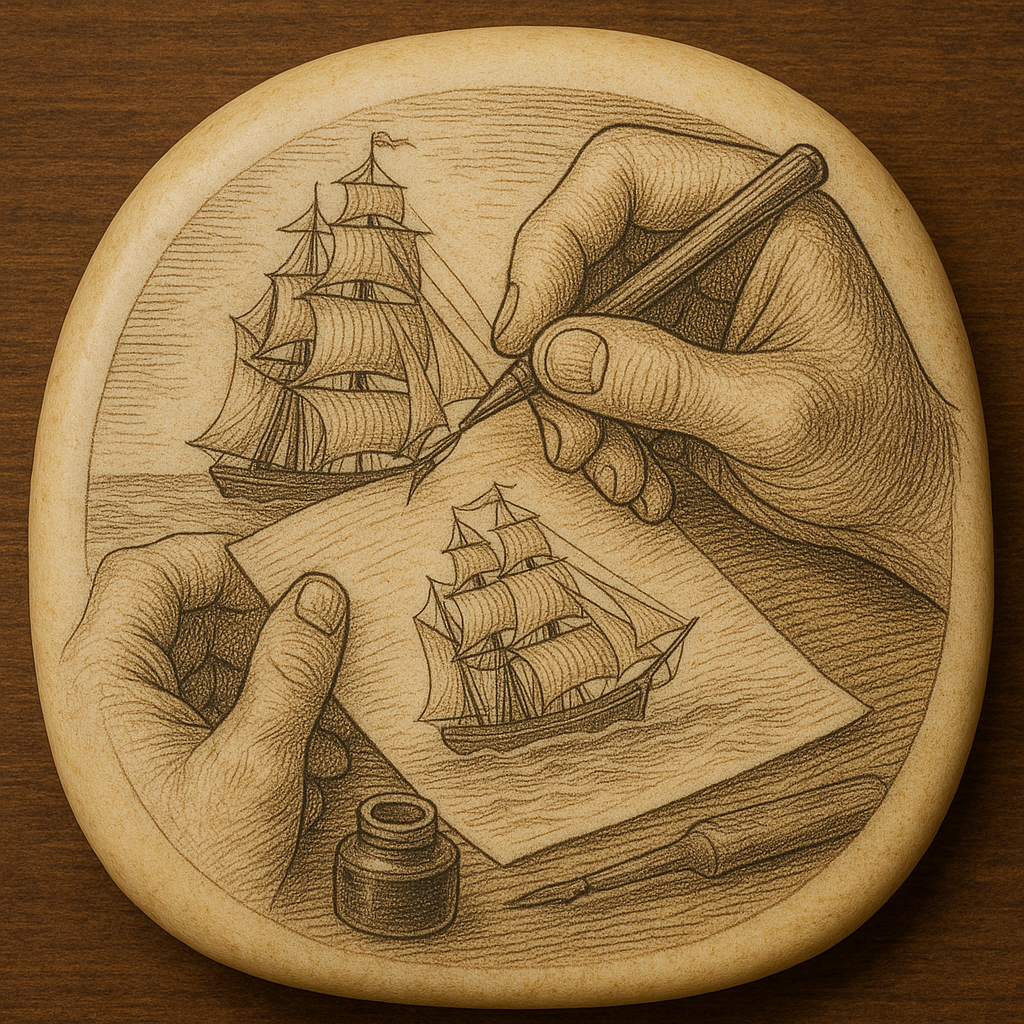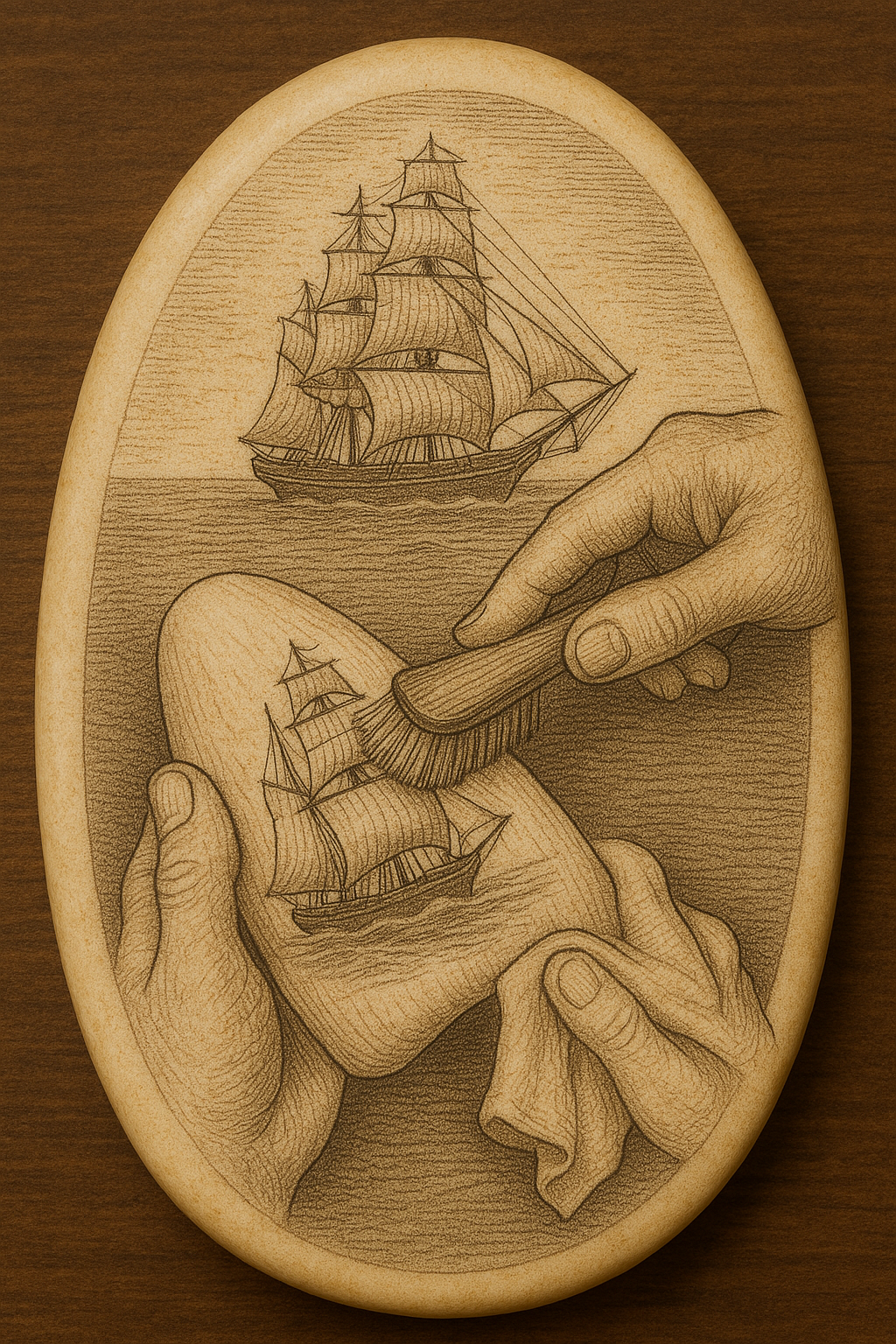 |
 |
The word “scrimshaw” first entered the lexicon in the early 19th century. It’s believed to derive from the Dutch word schrimshander, a slang term for “waste time.” That’s fitting, as the art was originally developed by whalers during long, idle periods at sea. These sailors would use their downtime to etch onto leftover whale parts, creating highly detailed artwork as keepsakes, trade goods, or personal expressions.
⚓ Maritime Connection
Scrimshaw is deeply rooted in maritime culture. Sailors often engraved what they missed most—home, sweethearts, and the ships they called home. It’s not just art; it’s history captured in bone.
What Materials Are Used?
Traditional scrimshaw was etched on:
-
Sperm whale teeth
-
Walrus tusks
-
Baleen
-
Whalebone
These materials were byproducts of the whaling industry, which was legal and widespread in the 1700s–1800s. Today, modern scrimshaw artists use ethical alternatives, including:
-
Antler or bone (elk, deer, buffalo)
-
Tagua nut (a plant-based ivory substitute)
-
Faux ivory (micarta, corian, or acrylics)
-
Eco-resin and other synthetic materials
The goal is to preserve the art form while respecting endangered species protections and ethical sourcing.
